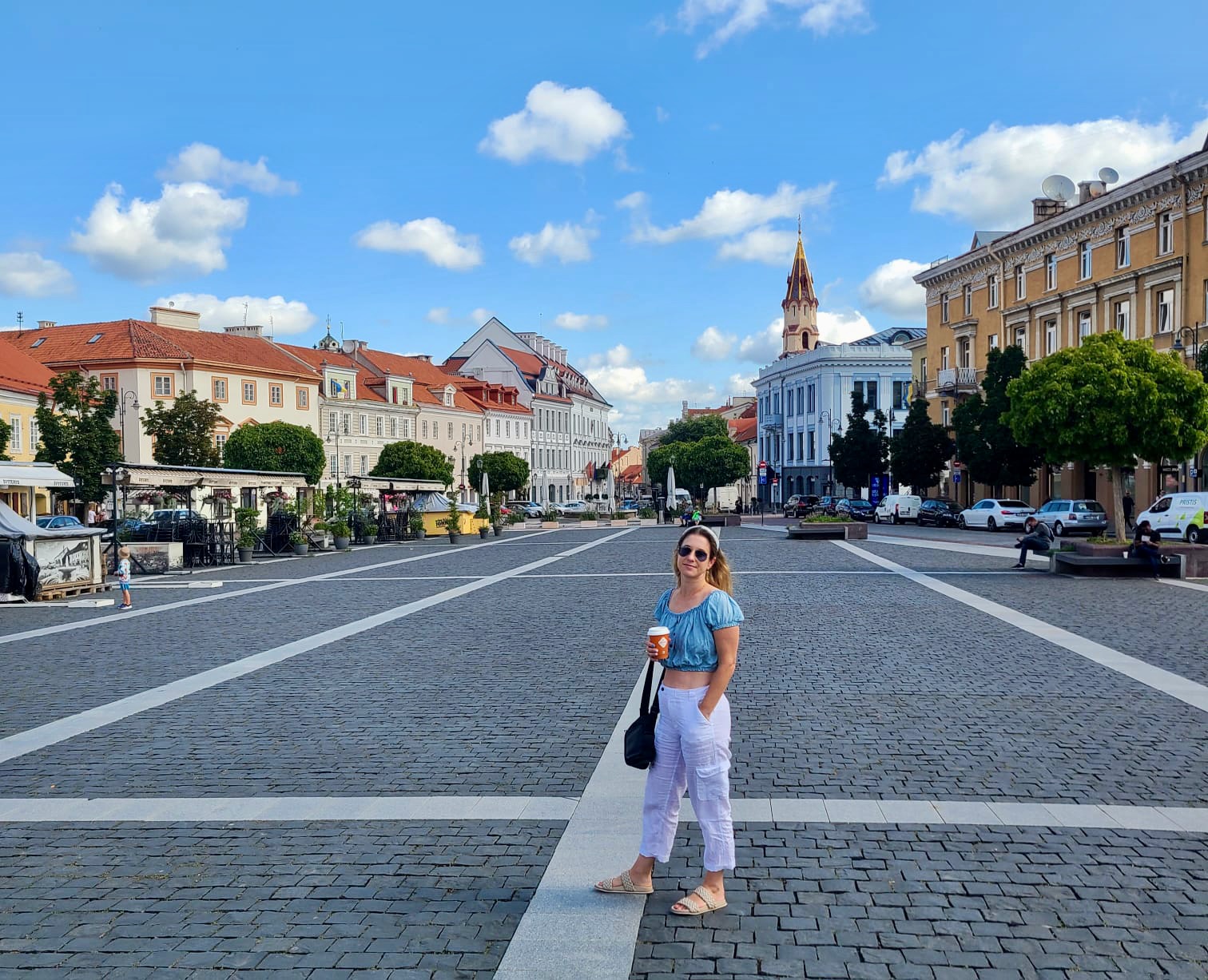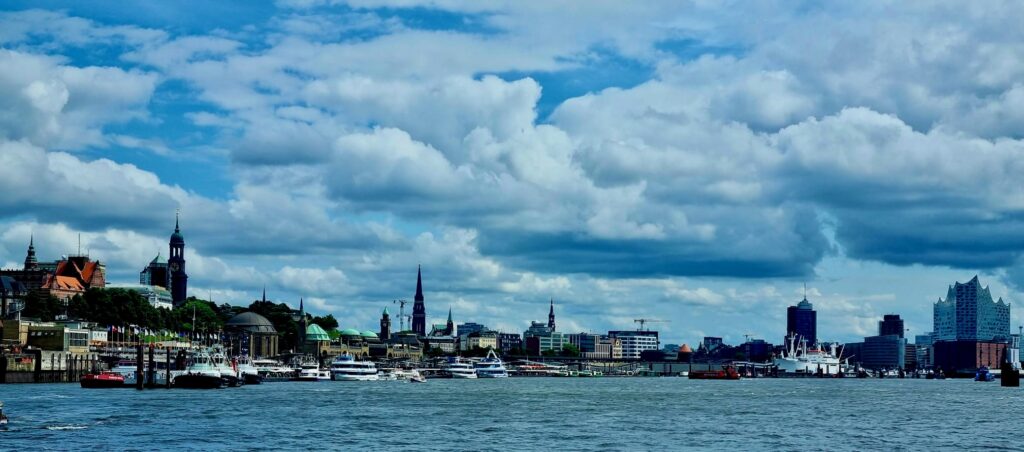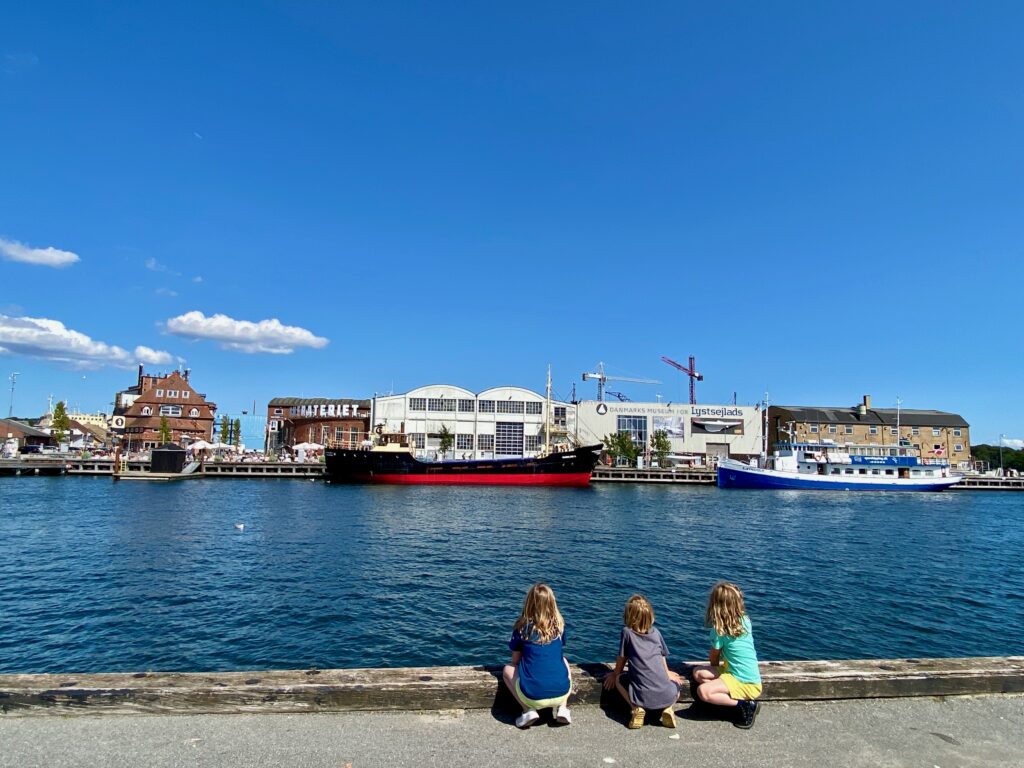Vilnius is a romantic, relaxed, and picturesque capital city, quite walkable and easy to explore the Old Town highlights in about a day. We stayed in a lovely Airbnb right near the Gates of Dawn, the only surviving defense wall of the city, with a chapel above it holding the black Vilnius Madonna, the country’s most visited religious and historical monument. Although there were certainly groups of tourists, Vilnius did not feel crowded, overrun, and chaotic, as can be the case in many European summer holiday destinations. The slower pace, comfortable temperatures, less touristy destinations, and opportunities to explore nature were some reasons we decided to focus on the Baltic States for this summer’s EuroTrip itinerary. It’s also easy to get by with English, though learning and using a few Lithuanian words is typically met with a smile in daily interactions. Jacob especially enjoyed riding the Traukinukas train around one of the main city park areas near the Gediminas Castle Tower and St. Anne’s Church.



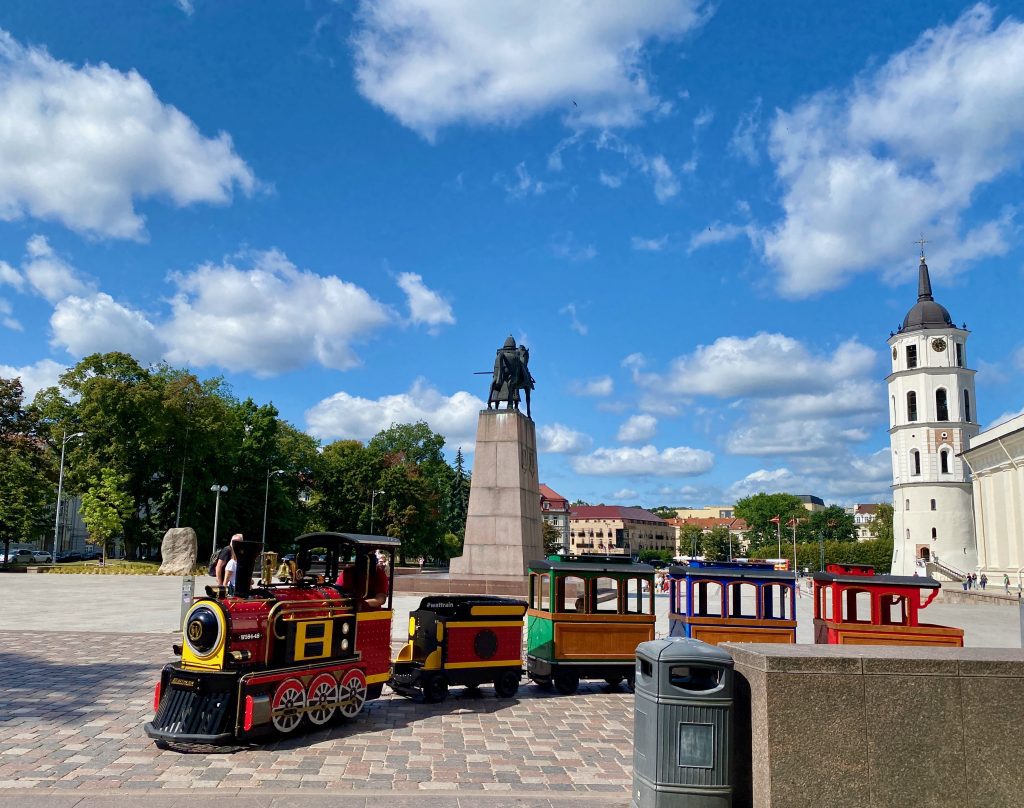
You can see locals soaking up every possible moment of sunshine and warm weather, picnicking and drinking at playgrounds and adjacent cafes, given that there’s only a few months of what we’d consider “good weather” during the year. The pleasant temperatures have been delightful for us, considering Valencia is boiling hot and humid for July and August (temperatures in the 40-plus degrees Celsius and 100+ degrees Fahrenheit), hence why we fled farther north this summer.
One of the highlights was a reunion with Matt Scranton (we went to high school together), who is now a diplomat working for the US Embassy in Vilnius. Matt was a great resource as we planned our Lithuania itinerary and especially for our time in Vilnius, plus he hooked us up with the biggest blueberries we’ve ever seen through a friend (cheap, delicious, locally grown berries of all varieties are a big thing here – a stop at Hales Market at the food stalls is a must-do as well). We had a lively dinner at Etno Dvaras @etno.dvaras enjoying his recommendations of Lithuanian classic dishes, and another evening we met up for beers and snacks adjacent to a playground (before it started to rain of course, as can happen in this part of the world at any time – always keep rain jackets and an umbrella with you). Chatting with Matt, we learned a lot more about Lithuania, the Baltic region’s geopolitics, and insights into his family’s long-term expat life with his work in the foreign service. “Ačiū” (that’s thank you in Lithuanian) to Matt for making our visit in Vilnius such a treat.



We were also fortunate to find an excellent local babysitter, Ieva, who took Jacob to the Lithuanian Railway Museum at the train station (with both indoor and outdoor, hands-on exhibits), the best local playgrounds, and kept him engaged and happy while we were able to visit some sites that wouldn’t have been as fun for him.

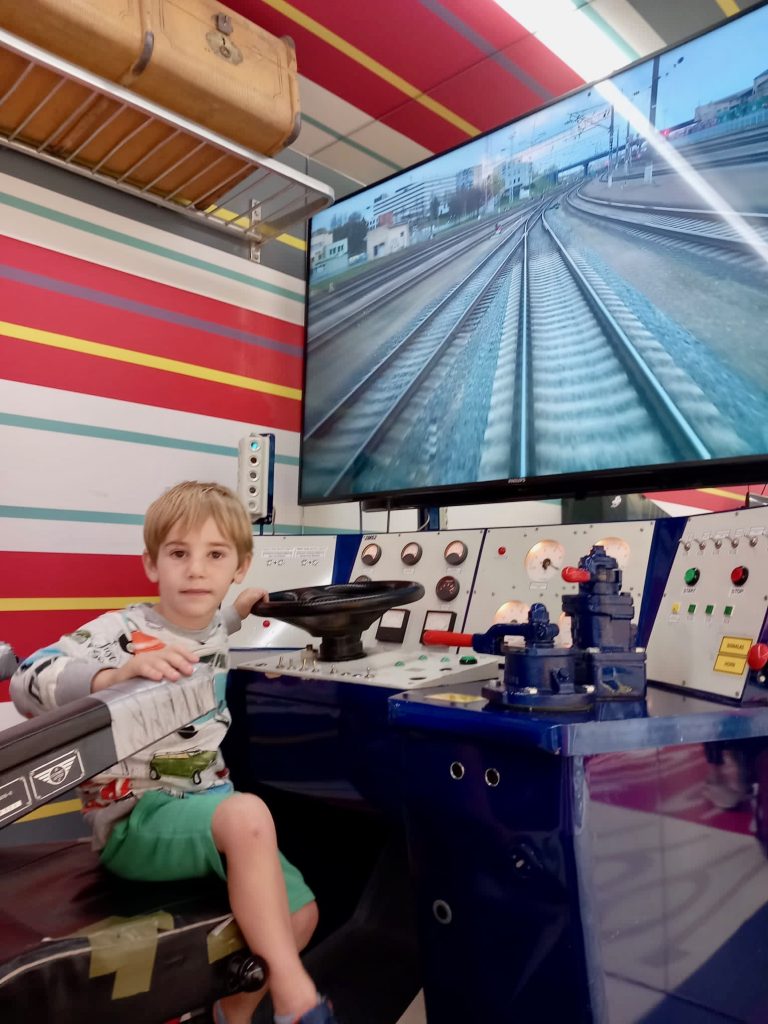

Meanwhile, Dave and I wandered Vilnius’ former Jewish Quarter sites. Before WWII, Vilnius was known as the “Jerusalem of the East” and a major learning, community, and population center, with over 100 synagogues and Jews making up the majority of city populations. But given Lithuania’s tragic Holocaust history (90% of Lithuanian Jews, and many Polish Jews deported there, were murdered by the Nazis and local collaborators), very little remains by way of sites: most are just commemorative markers, though there are some small museums and one remaining synagogue in town. I was most moved by a more recent addition to the area, a sculpture entitled “Water Carrier” by a Lithuanian sculptor, Romualdas Kvintas, who was inspired by the work of a Jewish poet, Moyshe Kulbak. Kulbak’s poem about Vilnius inspired the sculpture as a monument to idealism, even during the most difficult times.
We also visited the Panerai Holocaust Memorial, about a 15-minute train ride outside of town, but this sidetrip was a bit of a fail. Though the guidebook and website said its museum was open weekdays during normal business hours, it was inexplicably closed when we arrived at 11:00 a.m. and we were the only visitors. We were still able to walk around the site’s markers and memorials through the remote pine forest, though wished we had been able to tour the museum for more context and history about what happened there. At Panerai, Nazis and Lithuanian collaborators massacred an estimated 100,000 Jews and other victims by shooting them en masse into large pits and burning the bodies. It’s such an ugly, horrible history in such a serene, beautiful setting. Sadly there are many other rural sites throughout Lithuania where such massacres occurred.



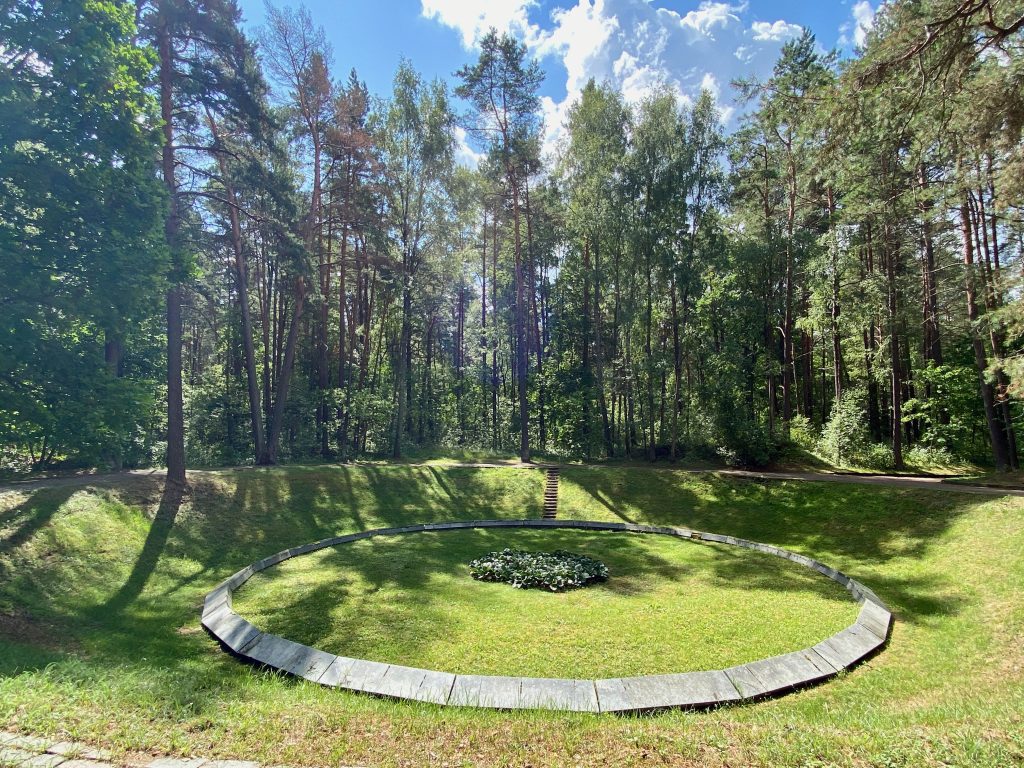
After a few days in Vilnius, it was time to pick up our rental car and begin our road trip through central and coastal Lithuania, Latvia, and Estonia. On the way out of Vilnius, we spent the morning at Trakai Castle, the only castle in Eastern Europe built on an island, from the 14th century. We rented a paddle boat to try to get the best views from the water, and enjoyed strolling down the lakeside paths and eating kibinine (basically a Lithuanian empanada, filled with sweet cottage cheese and veggies, or with meats). Surrounding Trakai are beautiful forested areas and a national park, so there’s a lot for visitors to enjoy on a daytrip here.

Finishing up our time in Vilnius marked three weeks into this eight-week summer EuroTrip. We recalled that it was at around the same time last year (and again this year, three weeks in) where we started to observe some behavioral challenges and frustrations with Jacob during the extended travel. The first few weeks are fun, new, and stimulating, and it definitely helped to spend longer stretches and go slower in cities like Krakow, Warsaw, and Gdansk from the start (this was a lesson we learned from last year’s EuroTrip where we moved too fast in the beginning and got pretty burnt out several weeks in). But as we continue on, we’ve observed that being out of the predictable, comfortable routine of preschool and lacking regular socialization with familiar faces and friends can take a toll. And although kids certainly play together even when they don’t speak the same language, there’s a lot less English here among younger kids and we can sense the challenge and isolation for Jacob in some settings. As we’ve been told many times — and we can certainly vouch for about travel with kids generally — this is a trip, not a vacation. Even though we’re traveling, we’re also working remotely and planning daily activities that attempt to strike a balance between what’s engaging and interactive for Jacob, what’s interesting for us, and the necessary downtime for all. Plus, we’re spending A LOT more quality time together as a family (than what’s typical in our life in Valencia), which we do enjoy and appreciate but can also bring along its frustrations. So it really helps to have babysitting in some of these cities so we can have breaks from each other. Whether it’s Jacob getting to visit his second or third playground in a day and enjoy a chocolate ice cream; Dave visiting a random museum or yet another WWII monument; or me getting a few hours alone with an iced coffee and a New Yorker magazine, those independent moments keep each of us a little more sane.
